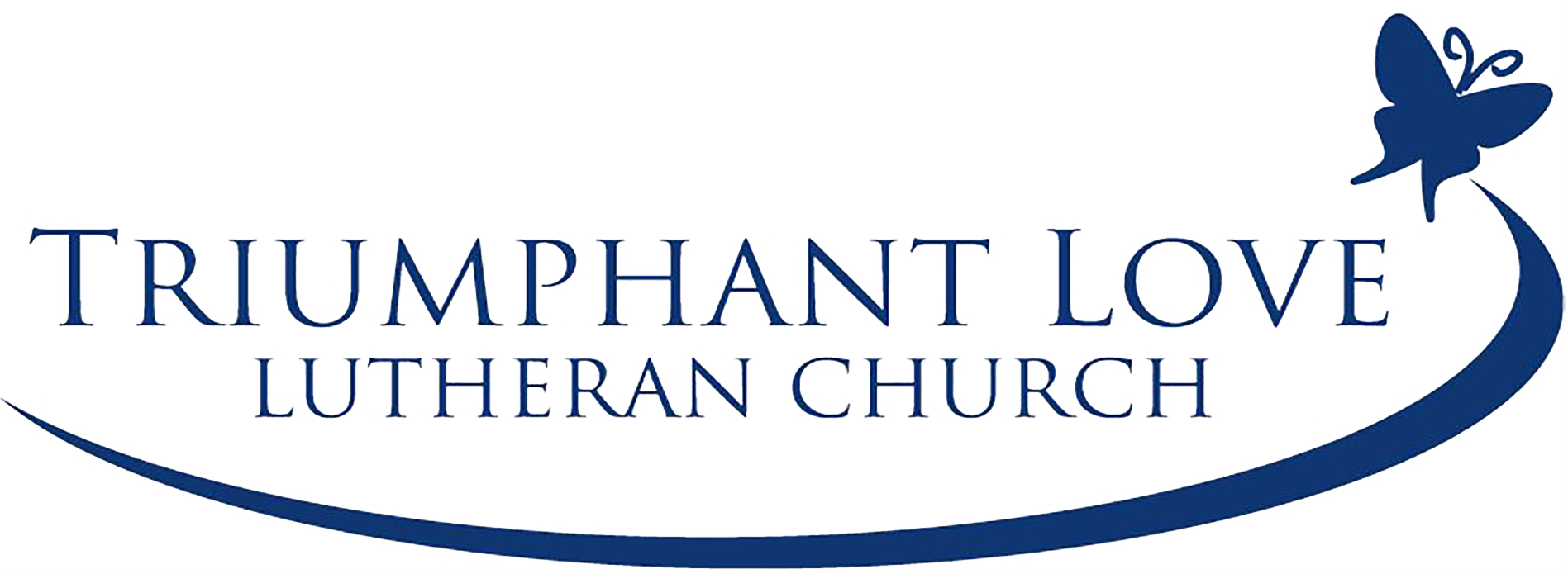Stories of Welcome: Remembering Our Immigrant Family Members
Among our Forming Faith goals for 2020-21, is welcoming the unwelcome. Because of the make up of TLLC’s members, we generally find welcome and acceptance wherever we go, but unfortunately that is not the case for all of God’s children. To help us connect with feelings and experiences of being welcomed and not welcomed, members of our Genealogy Group have offered stories of their ancestors. We hope that from these stories we will reflect on the importance of radical hospitality that reflects God’s unconditional welcome to each of us!
In the next few TLLC newsletters, you will see stories from our members about the experiences of immigrant family members and the experiences they had settling in this country. I hope it inspires you to consider how essential it is to help meet the needs of people and families in need of a home, a job, and a safe place to restart their lives.
Submitted by Norma Neeley
Marcy 11, 2021
My Ancestors
Karl August Bergstrom was born in Kristdala (Christ’s Valley), Kalmar lan, Sweden in 1851. His wife, Stina Maria, died in childbirth in 1877. In 1881, at 30 years of age, he emigrated from Sweden arriving at Castle Garden, New York, which predated Ellis Island as the immigration entrance center. Karl’s immigration papers indicated that his destination in the United States was Salina, Kansas. This area of Kansas had a large community of Swedes. Karl then moved to New Gottland in Kansas. There he married Anna Catarina Nelson who had immigrated from Sweden in 1882. Anna was also from the village of Kristdala. It is not known if they knew one another in Sweden. Karl and Anna moved to Marquette KS, near Lindsberg, bought farm land and started their family.
Records from the Elim Lutheran church showed the family joining the Marquette Lutheran community. Five of the six children were born in Kansas. Three of the children started school in Kansas.
The railroad was completed to Texas in 1893 which made thousands of acres of virgin land available which was perfect for farming. The Lindsberg Bank loaned the family money that made it possible to purchase land in Wharton County, Texas. Their homestead was 12 miles from the nearest Lutheran church. The roads were often impassable so Karl taught the children Sunday school at home. There was an “American” church nearby so they joined that church community.
Many of the mid-westerners sold their land and returned north. Oral history also, but had invested everything in their farm and could not afford to return north.
Karl eventually owned 300 acres. Descendants of Karl and Anna still live on their original land. Other Bergstrom descendants own land that has been in the family over 100 years.
This is the last of our collection of stories about the experiences of immigrant ancestors coming to America. Again and again we observe, even in the most modest details, what helped and what harmed newcomers to this country. The grace, generosity, and compassion of strangers along with the neglect and abuse from others towards our immigrant ancestors, shaped our own lives today. If the foresight and determination of my (Claudia Teinert) grandfather Wilhelm Mauss hadn’t led him to move his family out of Germany before Hitler closed the doors on his own people, I wouldn’t be here. If the Civil War hadn’t taken the life of Jan Schwanke’s great-grandfather in South Carolina soon after he arrived, would she be part of our church family today? May we look more closely and think more deeply about welcoming strangers in realistic and just ways. Peace to you all.
Submitted by Jan Schwanke
March 4, 2021
The discovery of my ancestors only goes back as far as great-grandparents, all of whom arrived from Prussia/Germany in the 1800’s when there was a lot of emigration to the United States. In general, I would say they were all received well. Some had family members already here that helped them make their start. They all met and married other immigrants like themselves and raised, in many cases, large families.
Two exceptions to this “good life” is my first great-grandfather on my father’s side of the family. Arriving in his early twenties, after just a few years he was drafted into the Union Army, served four months, became ill, and fell out of ranks on the march of General Sherman in South Carolina. He either died where he fell out of ranks or was killed by rebels. He left behind his wife and a two-year old son, my grandfather, who was raised by his mother and stepfather. My grandfather married a woman whose parents owned land that they were eventually able to buy and develop into the Grand View Guernsey Farm in Wrightstown, Wisconsin. This farm was in the family for over a century and was where my father was raised.
The second exception was the death of my mother’s mother, my grandmother, in the flu epidemic of 1918. My mother was just seven years old. There were eight children at the time. The four younger children were taken in and raised by aunts and uncles from both sides of the family. The four older children stayed at home and were raised by their father with the help of a housekeeper. The good thing about this was that they were all in the area in Wisconsin, so they were able to be together from time to time. So, this is the story of my ancestors coming to America.
In the lives of Jan Schwanke’s ancestors, we are reminded that tragedy and hardship have always come to immigrants regardless of their race or ethnicity. Easier transitions also occurred for people when they could settle in areas where relatives were already established. What’s different for immigrants today who seek a home in this country? What factors increase an immigrant’s chance of survival and prosperity – then and now? The story of Jan’s ancestors also shows that children have been separated from their parents throughout the history of immigration in the U.S. What makes such separations less traumatic?
Submitted by Ralph Erchinger
February 25, 2021
Mom and Pop
They weren’t childhood friends (Pop was born in 1895, Mom in 1900) but they grew up in the same little village of Tuningen in southwestern Germany, near the famous Black Forest. Pop (Christian Erchinger) had five brothers and six sisters as large families were essential for farmers in those days. Mom (Marie Hauser) had three sisters and two brothers. Her father worked in the Hohner Harmonica factory, not farming. Mom and Pop became an “item” sometime after WWI when they were both members of a community hiking club.
War is hell. Pop lost one brother in the first world war and one in the second; two of Mom’s sisters lost their men in WWII. Pop himself was in the trenches of WWI, was severely wounded, and carried shrapnel in his left shoulder until he died at the age of 89.
The post WWI trauma of inflation, depression, and shortages were a factor in Pop’s emigrating to the United States in 1926. As a master cabinetmaker he easily found work and was able to send steamship travel passage tickets to fiancé Marie (a secretary in a surgical instruments firm) so they could get married here in America. “OH NO YOU DON’T” said my grandpa Hauser. He sold the tickets and told Pop in no uncertain terms, “If you want to marry my daughter, you come here and do it right.” Pop did. They were married March 1, 1930, honeymooned in Europe, and I was born in the USA on December 14, 1930.
As a skilled craftsman Pop found work throughout the depression. We weren’t rich, but we weren’t poor. My parents’ strong work ethic, thrift, thirst for education, honesty and Christian values, were passed on to my brother, Walt, and to me. We had—and have—a wonderful life. Two childhood remembrances, among many, are worth re-telling.
The first I don’t really remember, but it was a favorite, if a bit embarrassing, story of my dad’s. I was a toddler; the year was about 1934. It was a Sunday afternoon and my folks were entertaining. Pop had built a winepress and made his own wine. His wine made for good company—frequent company! At some point someone wondered where I was. After a brief search I was found on the stair steps leading down to the basement. That’s where the wine cask was perched, the spigot positioned to fill any awaiting pitcher. I was discovered with joy—and surprise—and chagrin: there I was, head up, mouth open, wine dripping into my mouth! I was retrieved a bit tipsy. The wine cask was relocated!
The second story involves pussy willows which were an early discovery of mine while exploring the Forest Preserve in Calumet City, IL. Those fuzzy, velvety white puffs were exotic wild gifts of nature found only in a few special places. I later inquired and found they were true willows, but shrubs, not trees. Those I saw varied from two feet to six feet tall. I now know those charming silky little half-inch long puffs are technically called aments, or unisex flowers. I picked some and brought them home. Mom knew they were pussy willows, and she loved them. I went back and picked a whole big bunch. Mom put them in a vase–without water. They dried and kept their appearance. I was about eight or nine years old at the time. Mom still had a vase full of these dried beauties when she died in 1984. Those sixteen stems, two to three feet long were in a vase atop the bookcase in our family room before we moved to Buckner; now our kids are enjoying them in their homes. They are as beautiful and sturdy today as they were almost eighty years ago!
Thanks Mom and Pop, for life, for your example, for your strength.
Submitted by Rosanna Garry
February 18, 2021
Welcoming the Stranger – Stories of Radical Hospitality
I have few remaining ancestors to relate stories of their immigration to the USA, but I do know that most of them were poor or working class. They came from Germany, England, Scotland, and Ireland, with UK immigrants arriving first in Virginia and North Carolina the early 1600’s and 1700’s, and the Irish and Germans arriving in the mid-1800’s. Web-based search summaries by ethnicity follow.
My English colonist ancestors just barely survived, suffering through summer droughts and winter starvation. Salvation came to the colony in the form of smoking tobacco sold to England. In 1619, a General Assembly convened, bringing limited self-government to America and the first slaves to Virginia. For most of the 1600s, white indentured servants worked the colony’s tobacco fields, but by 1705 the Virginia colony had become a slave society. Nearly all power was in the hands of white male landowners, who ran the government and, by law, belonged to the Church of England. Women who married and worked at home were considered “good wives”; those who refused such “proper” roles were considered troublesome. And while Virginia’s ruling men did not encourage women to be independent, they nevertheless fought for their own independence, taking full part in the American Revolution (1775–1783).
My Irish ancestors were working class families who were often crowded into subdivided homes that were intended for single families, living in tiny, cramped spaces, cellars, attics and make-do spaces in alleys. A lack of adequate sewage and running water made cleanliness next to impossible. Disease of all kinds (cholera, typhus, tuberculosis, and mental illness) resulted from miserable living conditions. Thus, when the Irish families moved into neighborhoods, other families often moved out fearing the real or imagined dangers of disease, fire hazards, unsanitary conditions and the social problems of violence, alcoholism and crime. Many of the Irish were offered prejudice in place of welcome. The later 19th century Irish, arriving in substantial numbers after other established groups—as well as being Catholic, strange talkers, and considered “dumb” in stereotypes of the day—received the worst jobs: day labor. Many people said, sneeringly, that Irish immigrants arrived with a shovel in one hand, a potato in the other. Some Irish replied that if they had held that potato, they would not have come in the first place.
In the decade from 1845 to 1855, more than a million Germans fled to the United States to escape economic hardship. My German ancestors had little choice — few other places besides the United States allowed German immigration. Unlike the Irish, many Germans had enough money to journey to the Midwest in search of farmland and work.
With the vast numbers of German and Irish coming to America, hostility to them erupted. Part of the reason for the opposition was religious. All of the Irish and many of the Germans were Roman Catholic. Part of the opposition was political. Most immigrants living in cities became Democrats because the party focused on the needs of commoners. Part of the opposition occurred because Americans in low-paying jobs were threatened and sometimes replaced by groups willing to work for almost nothing in order to survive. Signs that read NINA — “NO IRISH NEED APPLY” — sprang up throughout the country. The Know Nothing Party’s platform included the repeal of all naturalization laws and a prohibition on immigrants from holding public office.
As you reflect on the experiences Rosanna’s immigrant ancestors likely experienced, why would such hardship and prejudice be directed to “new” people…starving people, violated people? Why is it human beings, perhaps ourselves, have such a fear and distain for immigrants? Are these well-founded fears in all cases? In any case? The Adult Faith Formation ministry offers these stories as a means for simple, thoughtful reflection, as an effort to reconcile our actions and attitudes to those of Christ as he was received as a stranger and a threat, and as he received strangers himself.
——-
Submitted by Claudia Teinert
February 11, 2021
My mother came to America in 1936 from Cuxhaven, Germany when she was 18 years old. Her mother, my Oma, ran a hotel in Cuxhaven and her father, my Opa, ran the adjoining restaurant and biergarten. At times, Hitler’s Brown Shirts (the “Sturmteilung,” the “assault division”) would darken his restaurant door with their extremist talk and lawless behaviors. At other times, the Red Shirts (the Russians) would dine at the restaurant – same talk, same attitudes. Her father, a professionally trained chef, finally took a position as head chef on the Queen Mary steamliner while the family remained at home. Rumors of the fear of Hitler from people in the many countries he visited confirmed his own fears. He understood it was critical to get his family out of Germany as soon as he could.
My Tante Annaliese was the first to arrive in New York. A graduate of the universitat and fluent in English, she secured a position as an editor for Time magazine, and later for Random House Publishershe lived the rest of her life in Manhattan. My mother Ingeborg, apprenticed and certified as a milliner and dressmaker in Germany, and my Tante Gisela, an apprenticed and certified bookkeeper, came next along with my Oma and they settled in Queens. My Tante Hilda remained behind to marry my Onkel Herbert, who was later drafted by the Nazis to be an accountant for a base in Italy. My Opa would join the family for brief stints and help with finances when the ship harbored in New York.
When my mother arrived in New York, she said the first thing they all did was take English classes at night. The first weeks, she walked the fashion district of Manhattan looking for work, and was finally employed by a furrier to model fur coats for his customers. The owner and his female coat makers believed my mother was Jewish (as they were), fleeing the atrocities of Hitler. My mother said she didn’t want to deceive them even though she really needed a job, and kept trying to tell them she was not Jewish, just “German.” She said they just nodded, and smiled, and kept her on. All of the sisters and my Oma found work in their profession or trade.
As the most adventurous of the sisters, my mother traveled to Denver, Colorado after 6 years and began work as the milliner for a department store in Denver. She would meet my father a few years later there. My mother said she was always fortunate that, even when employers believed she was just “a German,” they didn’t hold her nationality against her. She was welcomed and treated fairly with almost no exception by her employers and co-workers.
What a different experience other immigrants have had coming into our country. My mother’s family had the advantage of being skilled in a profession or trade, so perhaps that made their transition more seamless. Like other immigrants, my Opa was determined to get his family out of a violent and extremist country of bullies, death squads, and executioners. I am thankful for the mercy and help they were given to survive in America, and raise a generation of children who didn’t have to wonder if their father or brothers would be taken away in the middle of the night. It was not easy for them; they had to work very hard to pay rent, go to night school, and put food on the table by pooling their salaries. But, thanks be to God, they kept going forward. I’m ever indebted to them for instilling in me resilience, perseverance, resourcefulness, and optimism about living my life. I am also ever grateful to this country that accepted them, employed them, and most often treated them fairly.


